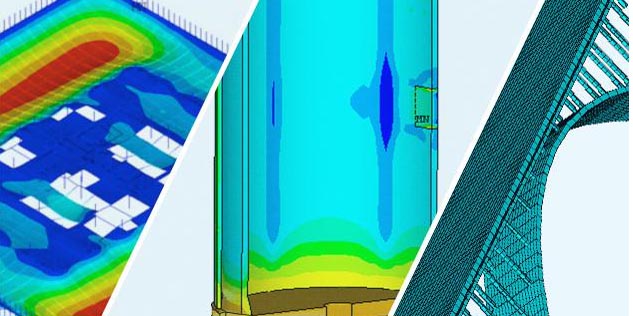Courses
Quick Links



Enquiry
Courses



Enquiry
ANSYS Civil is an advanced, comprehensive and reputable finite element analysis and design software available for the Civil Engineering Projects. ANSYS Civil gives designers the ability to assess the influence of this range of variables in a virtual environment. Thus, engineers can advance through the design and materials selection process quickly and efficiently. It provides an engineering solution spanning static, dynamic, linear and non-linear problems, that no other single code can match.

Since, ANSYS offers engineering simulation solution sets in engineering simulation that a design process requires, you can comply with increasingly demanding safety and government regulations and create environmentally conscious designs. Companies in a wide variety of industries use ANSYS software. You can narrow the scope of field investigations, save considerable time and cost on projects, and move more quickly to the groundbreaking stage.
At CADD Centre, we help you master the following features of ANSYS Civil:
Blast, Explosion & Impact : This advanced capability used in analysing the impact of blast, explosion and impact in civil engineering projects as diverse as high-rise buildings, bridges, dams, tunnels and stadiums.
Fire & Smoke Propagation: Designing fire and smoke management systems for buildings, subways and other facilities HVAC Equipment Design; Structural Building Design; and Ventilation & Comfort Modeling
Wind Engineering : Understanding the aerodynamics of a building is much more efficient and accurate when virtual modeling is used. Assessing the structural load imposed by the wind is a priority
At CADD Center, we help you adept the accompanying features of GD&T:
You will learn to test variables virtually to simulate the many possible scenarios and ultimately create the safest systems possible.
You will know how to do rock and soil mechanics analysis; material-specific maximum load assumptions; linear, nonlinear, static and dynamic analyses; sensitivity and parametric studies; and other related works.
You will experiment with design in a virtual environment, and analyze safety, strength, comfort and environmental considerations of buildings and other civil projects.
You will know how to virtually model various structures and test the impact of environmental and destructive forces as many times as needed to completely understand the effects of a disaster on a structure.
You will know how to apply mechanical, fluids and multiphysics tools to a wide range of HVAC equipment design, including: air cleaning equipment, air conditioners, boilers, chillers, diffusers, heat exchangers/coils, humidifiers/dehumidifiers, heating equipment, pumps/blowers, fans and compressors/exhausters, and refrigeration
You will know how to import full 3-D CAD models into the ANSYS Workbench environment, and view and analyze 3-D product designs.